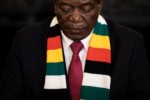Middle East / The US strike on the Houthis won’t deter Iran or its proxies
A month before the targeted killing of the Islamic Revolutionary Guard Corps’ (IRGC) commander Qassem Soleimani in January 2020, few would have expected the US government to eliminate him in a drone strike. Fast forward to this month, and the United States and its allies have launched a military operation to degrade and deter the Houthis. Last night, they launched strikes against more than a dozen Yemeni locations, with explosions reported in the capital Sanaa, the Red Sea port of Hudaydah, Dhamar and north-western Houthi stronghold Saada.
The Houthis are armed, financed, and resourced by the IRGC and have been targeting commercial vessels in the Bab al-Mandeb Strait, a sensitive global chokepoint. But the US’s operation has lacked the speed, stealth, and surprise that Soleimani’s demise carried. That risks undermining the very deterrence that Washington and London hope to build with their strikes.
It is not only a question of quantity, but the quality of targets
Military strategists and decision-makers in Iran have long sought to encircle Israel in a ring of fire. Hamas’ ‘Operation Al-Aqsa Flood’ on 7 October and the ensuing response from the IRGC’s axis of resistance, comprised of militias like Hamas, Hezbollah, and the Houthis, represented the first large-scale implementation of this doctrine. Tehran has been pulling the strings in the background. It has been like an orchestra, with the militias as players – and........
© The Spectator





















 Toi Staff
Toi Staff Belen Fernandez
Belen Fernandez Andrew Mitrovica
Andrew Mitrovica Gideon Levy
Gideon Levy Tarik Cyril Amar
Tarik Cyril Amar Rachel Marsden
Rachel Marsden Warren J. Blumenfeld
Warren J. Blumenfeld Dr Ramzy Baroud
Dr Ramzy Baroud Tafi Mhaka
Tafi Mhaka Adam Makary
Adam Makary
